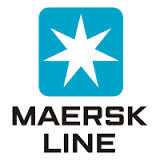In the short and medium term, it will be difficult for Latin America and Mexico to receive latest generation ships carrying 18,000 to 20,000 TEUs, even with the opening of the expanded Panama Canal.
This is the opinion of Julian Fernandez, regional business development director of Maersk Line.
He said the port system in the region is not prepared for this type of ship.
Maersk Line warns that improvements in the productivity indices of the region’s ports are needed
Maersk Line warns that improvements in the productivity indices of the region’s ports are needed.
The major impediment of port systems in the region is the low container movement capacity per hour/dock, unlike that of the global average.
The port of Yokohama moves 150 containers per hour; Tianjin, 119: Qingdao, 107; Xiamen, 106 and Kaohsiung, 105. Meanwhile, ports such as Lazaro Cardenas move 65 containers; Veracruz, 56; Callao, 55, and Evergreen Colon, 54, which indicates a very important investment need for these terminals to become competitive.
He added that “we must improve productivity indices of the ports and double the capacity of the terminals a little more.” Otherwise, he said, the shipping lines will bypass these ports and look for others that offer loading and unloading at lower costs and with adequate infrastructure.
As if that were not enough, he explained, the market is not big enough. “Today and in the medium term, there is not enough cargo to carry, and therefore we see no need to use these types of ship in the region.”
Copyright Ships & Ports Ltd. Permission to use quotations from this article is granted subject to appropriate credit given to www.shipsandports.com.ng as the source.

